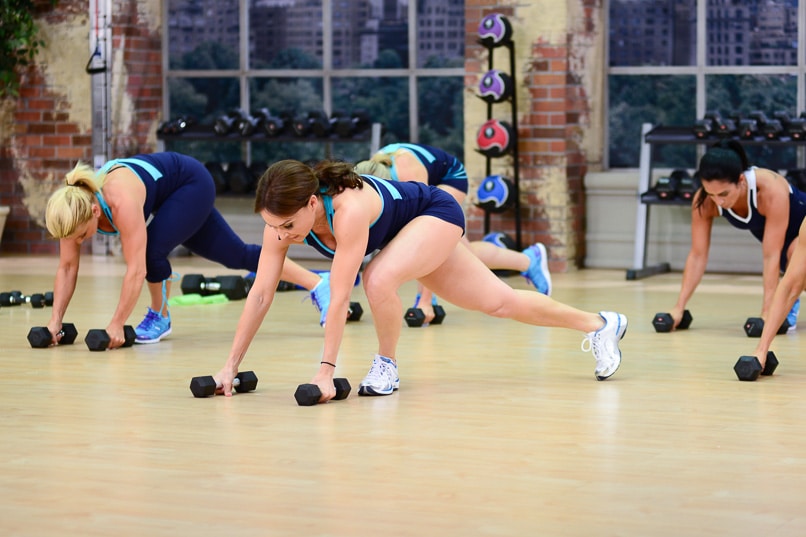
Endurance Exercise Adaptations: Stroke Volume
One organ that undergoes adaptations in response to exercise is your heart. During aerobic exercise, depending upon the intensity and your level of training, the amount of blood your heart pumps increases up to six times relative to the quantity it pumps at rest, partially due to an increase in heart rate. With regular aerobic exercise, stroke volume increases, the amount of blood your heart pumps with each beat. Because your heart can eject more blood with each beat, your resting heart rate slows because your heart no longer has to work as hard to deliver blood to tissues. How low can it go? Some highly-trained, endurance athletes have resting heart rates of 40 beats per minute or slower due to an exercise-induced increase in stroke volume. Your resting heart rate can decrease by as much as 30 beats per minute after 6 months of endurance training.
Endurance Exercise Adaptations: Aerobic Capacity
Another adaptation that happens with aerobic training is an increase in aerobic capacity. One of the best measures of aerobic capacity is V02 max. V02 max refers to the maximum amount of oxygen your body can use during maximal exercise. Athletes with a high V02 max have a greater ability to deliver oxygen to exercising muscles and use that oxygen to make ATP to fuel exercise aerobically.
A person’s aerobic capacity or V02 max is partially determined by genetics but regular training can increase an individual’s V02 max an average of about 20%. Some people experience an even greater increase in V02 max in response to aerobic training, especially if they were sedentary, to begin with. At the other extreme, there are a small percentage of individuals who experience little or no increase in V02 max in response to regular aerobic exercise training. An increase in aerobic capacity, as measured by V02 max, is one of the most desirable benefits of cardiovascular exercise.
Endurance Exercise Adaptations: Plasma Volume
In response to regular endurance exercise, you experience an increase in plasma volume, the liquid portion of your blood that red blood cells are suspended in. This usually occurs with little or no change in red blood cell quantity. This increase in plasma volume is beneficial because it helps with temperature regulation and oxygen delivery. Plasma volume increases quickly in response to aerobic exercise. In fact, it starts to increase after a single aerobic workout and continues for several weeks. If you stop aerobic training, your plasma volume slowly returns to pre-exercise levels as a part of de-training.
Endurance Exercise Adaptations: Muscle Cell Mitochondria
Mitochondria are the powerhouses of the cell. They’re the components that produce the ATP your muscle cells use during exercise. One of the ways slow-twitch muscle fibers, the kind best suited for endurance exercise, adapt to aerobic training is with an increase in the number of mitochondria inside working muscle cells. With more mitochondria, cells can produce ATP aerobically at a faster rate to fuel exercise. In addition, mitochondria also increase in size and the enzymes used to make ATP aerobically increase in number. The ability to produce energy aerobically at higher exercise intensities means there’s less dependence on anaerobic energy production and the build-up of lactate and hydrogen ions that lead to exercise fatigue.
Endurance Exercise Adaptations: Capillary Density
Another adaptation that occurs with aerobic exercise is an increase in capillary density around muscle fibers. When there are more capillaries surrounding each individual muscle fiber, there’s an increased ability to deliver oxygen to muscles during exercise and the potential to produce ATP at a greater rate. This leads to greater exercise endurance.
Endurance Exercise Adaptations: Increase in Use of Fat as Fuel
With regular endurance exercise, your body develops a greater capacity to mobilize and oxidize fatty acid from triglycerides as fuel. This has the benefit of conserving glycogen stores so you can exercise longer at a sub-maximal intensity.
The Bottom Line?
As you can see, your body undergoes a number of adaptations at the organ level and the cellular level in response to endurance training. These adaptations improve oxygen delivery and usage so your muscle cells can produce ATP at a faster rate aerobically. This gives you greater endurance whether you’re doing a sustained run or a long kickboxing or step class. That comes in handy during a tough, aerobic workout. Aren’t you glad your body can adapt?
References:
Br J Sports Med 2005;39:190-195.
Exercise Physiology. Fifth Edition. McArdle, Katch, and Katch. 2002.
Related Articles By Cathe:
5 Ways High-Intensity Interval Training (HiiT) Improves the Health of Your Heart
How Much Can You Improve Your V02 Max?
4 Ways Your Heart Adapts to Aerobic Exercise
Can You Still Get the Benefits of Exercise if You Start Later in Life?
Strength Training Versus Endurance Training: Which is More Effective for Weight Loss?
Does Low-Intensity Exercise Have Health Benefits Too?

